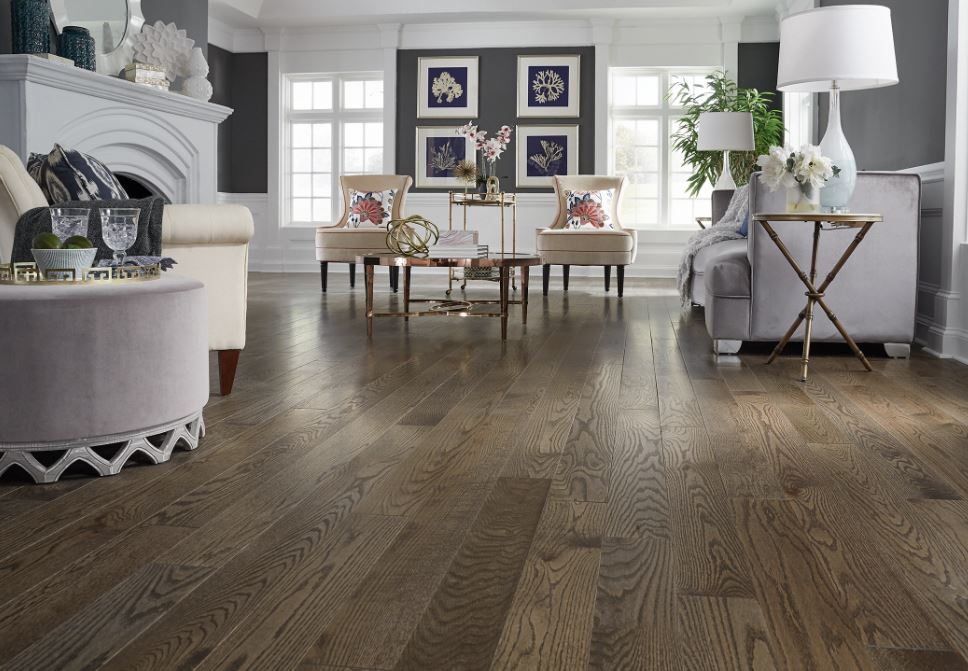As sustainability becomes more than just a buzzword in the world of design, homeowners, architects, and developers are increasingly seeking eco-friendly alternatives for every element of construction and decor — including flooring. In 2025, the rise of eco-conscious living has fueled a surge in demand for flooring options that are not only beautiful and durable but also kind to the environment.
Whether you’re remodeling a home or designing a commercial space, sustainable flooring solutions are a smart investment in both design and environmental impact. In this blog, we’ll explore what makes flooring eco-friendly and highlight some of the best sustainable options for modern interiors.
Why Choose Eco-Friendly Flooring?
Eco-friendly flooring offers several key advantages that go beyond aesthetics:
Reduced Environmental Impact: Sustainable materials are sourced responsibly, with minimal harm to forests, ecosystems, and natural resources.
Lower Emissions: Many green flooring options emit fewer volatile organic compounds (VOCs), contributing to better indoor air quality.
Long-Term Value: Durable and timeless in design, many sustainable floors have a long lifespan, reducing waste over time.
Contribution to Green Building Certifications: Using eco-conscious materials can help projects meet standards like LEED or WELL Building certifications.
With the demand for healthy, responsible living spaces on the rise, eco-friendly flooring is no longer a niche product — it’s becoming the standard.
Bamboo Flooring
Bamboo is often hailed as one of the most sustainable flooring materials available. While it looks and feels like hardwood, bamboo is technically a grass — and it grows incredibly fast, often reaching maturity within 3–5 years (compared to 20–100 years for hardwood trees).
Benefits:
Rapid renewability
Natural resistance to moisture and insects
Available in a variety of finishes and styles
Considerations:
Must be sourced from reputable suppliers to ensure responsible harvesting
Avoid low-quality bamboo which may contain high levels of adhesives or VOCs
Cork Flooring
Cork is harvested from the bark of cork oak trees, which naturally regenerates after being stripped — making it a renewable and tree-friendly material. With its unique texture and comfortable feel, cork is growing in popularity for both residential and commercial interiors.
Benefits:
Excellent insulation properties (both thermal and acoustic)
Naturally antimicrobial and resistant to mold and mildew
Soft underfoot, ideal for areas where you stand for long periods
Considerations:
Needs to be sealed properly to protect against moisture
Can fade in direct sunlight if not treated
Reclaimed Wood Flooring
Instead of cutting down new trees, reclaimed wood flooring gives old wood new life. Salvaged from old barns, factories, or ships, this material adds a rustic, character-rich element to interiors while minimizing deforestation.
Benefits:
Unique textures and patina that can’t be replicated
Reduces landfill waste and resource consumption
Often stronger and more stable than new-growth wood
Considerations:
Can be more expensive due to sourcing and refinishing
Requires careful inspection for pests, nails, or damage
Recycled Materials (Glass, Rubber, Composite Tiles)
Flooring made from recycled content — such as glass tiles, rubber from old tires, or plastic composites — is an innovative way to reduce waste and give new life to discarded materials.
Benefits:
Highly durable and resilient, especially in high-traffic areas
Wide range of colors and textures
Keeps non-biodegradable waste out of landfills
Considerations:
Some recycled materials may have limited design flexibility
Can be slightly more expensive depending on the material
Linoleum (Not Vinyl!)
Often confused with vinyl, true linoleum is made from natural materials like linseed oil, wood flour, and cork dust. It’s one of the oldest eco-friendly flooring types, and it’s making a comeback for those seeking natural, biodegradable alternatives.
Benefits:
Fully biodegradable and made from renewable resources
Antibacterial properties, ideal for kitchens and healthcare settings
Long lifespan when maintained properly
Considerations:
Susceptible to moisture if not sealed
May darken or yellow slightly over time due to oxidation
Engineered Wood with Sustainable Certification
Not all engineered wood is environmentally friendly, but many manufacturers now offer products certified by organizations like the Forest Stewardship Council (FSC). These options use layers of real wood from responsibly managed forests and offer better dimensional stability than solid hardwood.
Benefits:
Looks and feels like real wood
Uses fewer slow-growing hardwoods
Suitable for various climates due to improved stability
Considerations:
Always verify sustainability certifications
Watch for adhesives with high VOC levels in cheaper products
Making the Right Choice for Your Space
When choosing an eco-friendly flooring material, consider the following:
Intended Use: High-traffic areas like hallways and offices may require more durable materials like cork or recycled rubber.
Aesthetics: Do you want a sleek modern look, a rustic vibe, or something vibrant and bold?
Maintenance Needs: Some natural materials require sealing or special care.
Budget: While some options like reclaimed wood may be more costly upfront, their longevity often justifies the price.
Conclusion
As environmental awareness continues to grow, eco-friendly flooring Dubai is no longer a compromise — it’s a lifestyle choice that aligns beauty, function, and responsibility. From fast-renewing bamboo to character-rich reclaimed wood, there’s a sustainable option to suit every space and style. By choosing greener materials, you’re not just upgrading your interior — you’re making a lasting investment in the planet’s future.
Thinking about switching to sustainable flooring? Consult with a trusted supplier who can help match your needs with eco-conscious options that stand the test of time.

